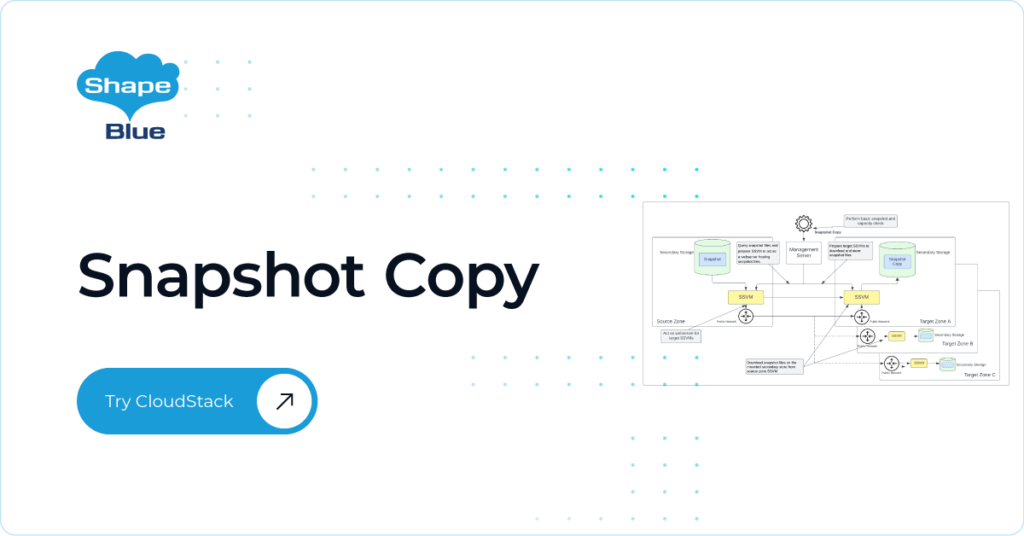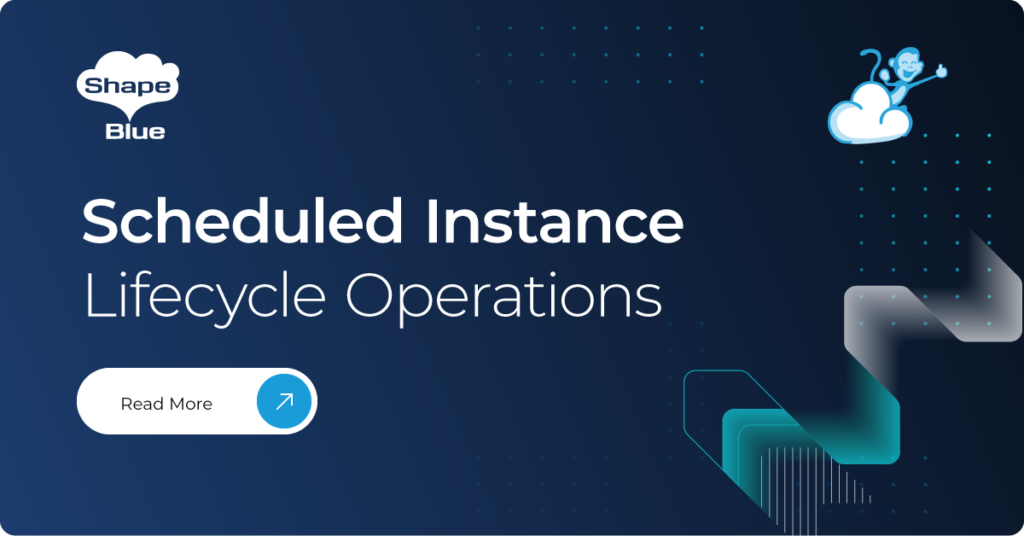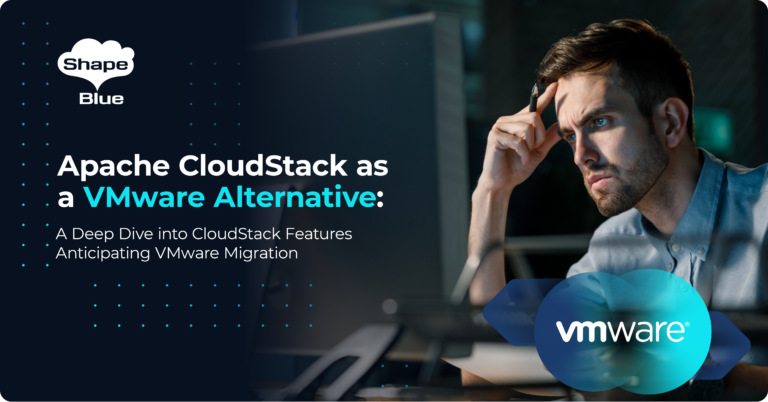With much fanfare, Citrix yesterday formally announced the 4.2 release of their IaaS cloud orchestration technology CloudPlatform. In parallel, the Apache Software Foundation are about to announce version 4.2 of Cloudstack.
In this article, Giles Sirett CEO of ShapeBlue gives his first impressions on CloudPlatform 4.2
At ShapeBlue, we’ve had both of these technologies on the bench for some time now and wanted to share our first impressions.
Built on open-source success
Most people are aware that CloudPlatform is based on Apache CloudStack (“powered by” is the tagline that lets the copyright lawyers sleep at night) . This came from Citrix’s strategy of donating the technology to a well governed open-source community, which would bring stable development and a product roadmap not unduly influenced by any particular vendor, allowing Citrix to work on features that better compliment their own markets. Citrix CloudPlatform is then their own, heavily QA’d version of the same platform.
What’s significant on the 4.2 release is that, finally, both products have their release cycles in sync. So, in effect, this review is of both Citrix CloudPlatform 4.2 and of Apache CloudStack 4.2. To keep things simple, I’ll refer to CloudPlatform.
For the record, I am personally involved in the Apache CloudStack project and my company is also a Citrix Cloud partner.
I’ll go into specific features a little later, but first probably best to understand the high level strategy around this release of CloudPlatform and what differentiates it from other cloud orchestration technologies
Twin workload types – needed by enterprise customers
A lot of the new features of CloudPlatform 4.2 have gone into further enhancing the ability of the technology to support two types of workload: cloud era and traditional workloads
At ShapeBlue we’re now seeing the market demand for IaaS moving away from service providers over to it becoming an building block for IT automation. Whether its to support rapid/agile development environments or to make traditional IT operations more efficient, the IT world seems to be waking up to the benefits that an orchestrated IaaS model can bring (I hate the term, but lets call this “enterprise cloud adoption”) . The challenge for enterprise adoption is that, on one hand, enterprises want to exploit the low cost, horizontally scalable, infrastructure needed to support cloud era applications but, on the other hand, also need to support traditional enterprise applications (that expect availability and scale to be handed by the infrastructure).
This is where CloudPlatform 4.2 really shines with support for both traditional workloads and cloud era workloads. This gives the ability to mix the cost benefits of a low cost, Amazon-like, architecture with a traditional enterprise style architecture: but all orchestrated as a single cloud.
Enhanced Scalability through regions
CloudPlatform has already been proven for some time to be the most scalable IaaS platform around (examples of 30k + hosts in production clouds). However, to date, the top level organisation unit in CloudStack has been the zone (akin to AWS availability zones, usually a DC) . 4.2 brings the concept of regions. By grouping zones into regions, the cloud can achieve higher availability and scalability. User accounts can span regions, so that users can deploy VMs in multiple, widely-dispersed regions.
Even if one of the regions becomes unavailable, the services are still available to the end-user
through VMs deployed in another region.
Enhanced Hypervisor Support
One of the key differentiators of CloudPlatform has always been its support for multiple hypervisors. This has allowed many organisations to remove the lock-in challenges that they face with virtualisation vendors.
However, this multi- hypervisor approach has always meant that compromises have had to be made: CloudPlatform often had to offer a subset of the functionality of more advanced hypervisors.
In order to support the twin workload paradigm, much work has gone into 4.2 around its support of both VMware and Xen server native functionality. The highlight of this for me is its ability to take full VM snapshots of VMware instances (including memory & CPU state) to compliment CloudPlatform’ s native snapshot functionality. Also, in order to support zone-wide functions for VMware, changes have been made so that CloudStack is now aware of VMware Datacentre’s and can map each Datacentre to a CloudStack zone.
VMware vNetwork Distributed Virtual Switch support will greatly simplify the application of VMware networking (and speed of network creation) and allows enhanced dvSwitch features such as PVLANs
Dynamic scaling of CPU and RAM is now supported across both VMware and Xen.
Xen Server 6.2 is now supported fully, good news for anybody planning on deploying using an open-source hypervisor model.
Plugs in’s everywhere
The 4.2 release brings new plug-in architecture models in a number of areas
With CloudPlatform 4.2, a plug-in architecture has been developed to allow any object based storage to be used for secondary storage (any object store that supports the S3 interface to be specific). Expect to see announcements from Basho and Ceph pretty soon around this.
One of the limiting factors of CloudPlatform to date was that secondary storage (used for templates, ISO’s, etc) has been at zone level. Organisations with multiple zones would have to traditionally replicate these data artefacts across different zones.
The primary storage architecture has now also moved to a more modular model, allowing storage vendors to more easily expose their own specific functionality. First to market with such integration are Solidfire (vendors of very exciting SSD based storage). Its now possible to use CloudPlatform to provision different tiers of Solidfire storage from within the CloudPlatform UI. Expect other storage vendors to follow (I know of at least two others who have plans around CloudPlatform).
One of the strongest benefits of CloudPlatform as always been the number of “ecosystem” vendors that integrate with the platform (think PaaS vendors such as Cumulogic, billing platforms such as Amysta, etc). The ability of these guys to develop straight into the CloudPlatform UI has now been greatly enhanced through a UI plug in architecture. This will allow 3rd party vendors to much more easily integrate their technologies into the native user interface . To date, this has been a pretty complex process.
Much better support for networking vendors has also been included with Citrix Netscaler (rather obviously) and Cisco UCS leading the charge.
A basis for application-centric IaaS
A key play for enterprise IaaS adoption is the ability to deploy multi-tier applications with the security isolation levels expected of a, multi-tiered, enterprise network. For some time now, CloudPlatform has supported the concept of Virtual Private Cloud (VPC) as a platform for such multi-tier applications. Users were also able to connect their multitier applications to a private Gateway or a Site-to-Site VPN tunnel and route certain traffic to those gateways. For CloudPlatform 4.2, a whole range of additional features are implemented to enhance VPC applications.
I won’t go into all of these features in detail, but collectively they represent the single largest element of development effort for this release. The features include load balancing support for VPC, portable IP’s (think elasctic IP’s), enhanced Access Control lists, the ability to deploy to a specific VPC tier and over a dozen other new headline features.
Summary
Even before this release, I strongly believed that CloudPlatform (or CloudStack) is the most sensible choice for organisations wishing to quickly deploy a scalable, proven Iaas platform. It may not have the marketing hype of some other IaaS platforms, but it works and works well. That’s why its remains the goto IaaS platform at my company.
Over 200 sizable production clouds are already in deployment based on this technology. With the drive towards supporting both cloud era and traditional eateries workloads, I see CloudPlatform becoming the leader in the emerging enterprise cloud space.
Giles is CEO and founder of ShapeBlue and is responsible for overall company strategy, strategic relationships, finance and sales.
He is also a committer and PMC member of the Apache CloudStack project, and Chairman of the European Cloudstack User Group, actively helping promote brand awareness of the technology.





